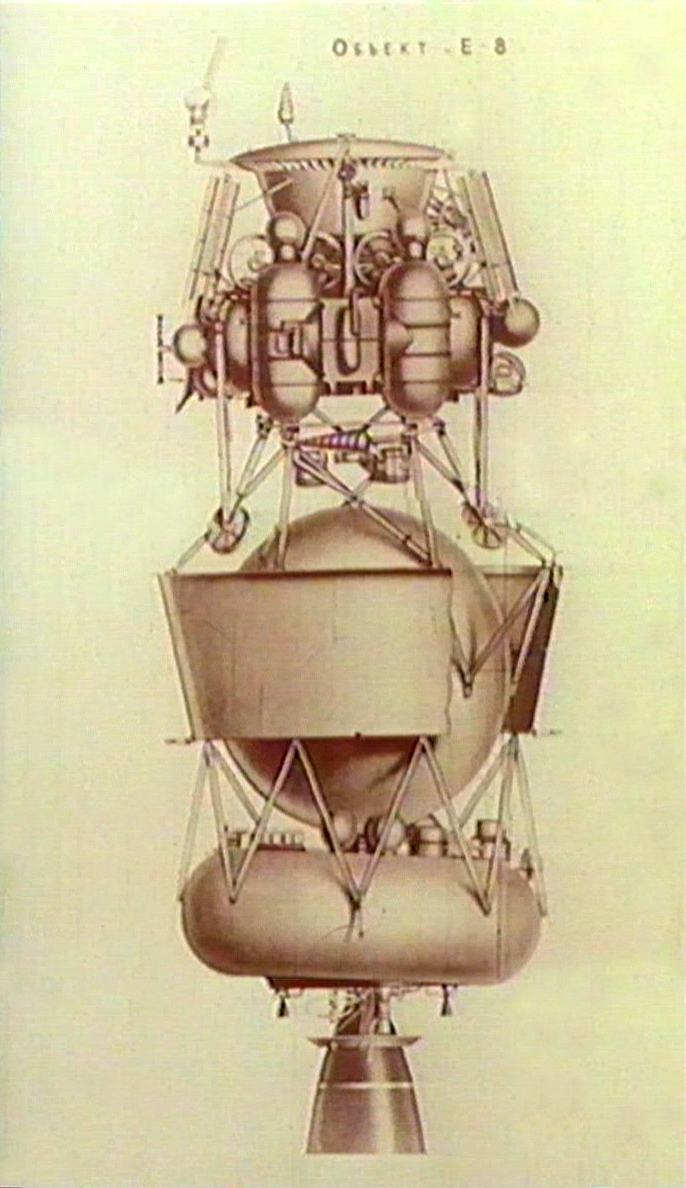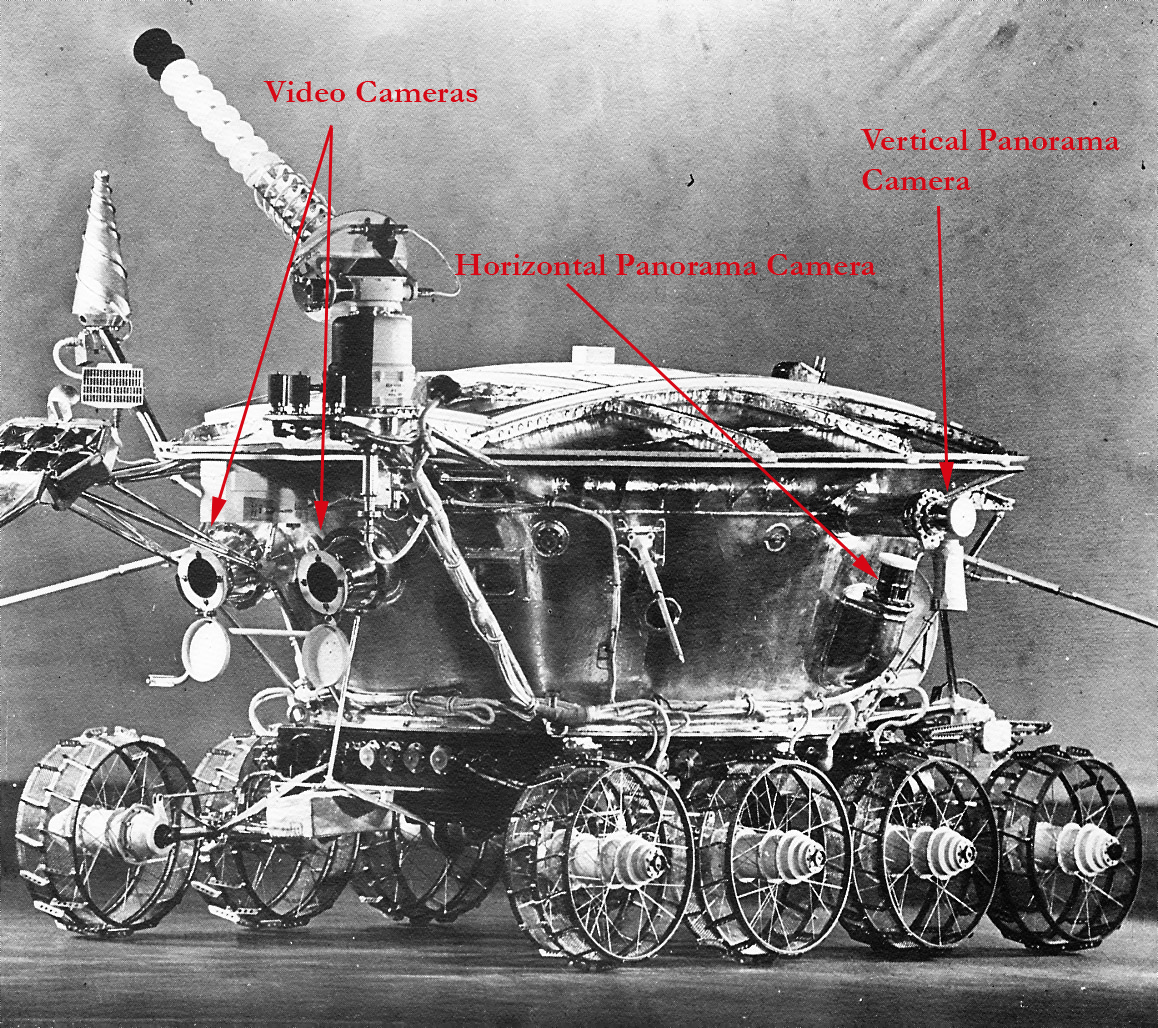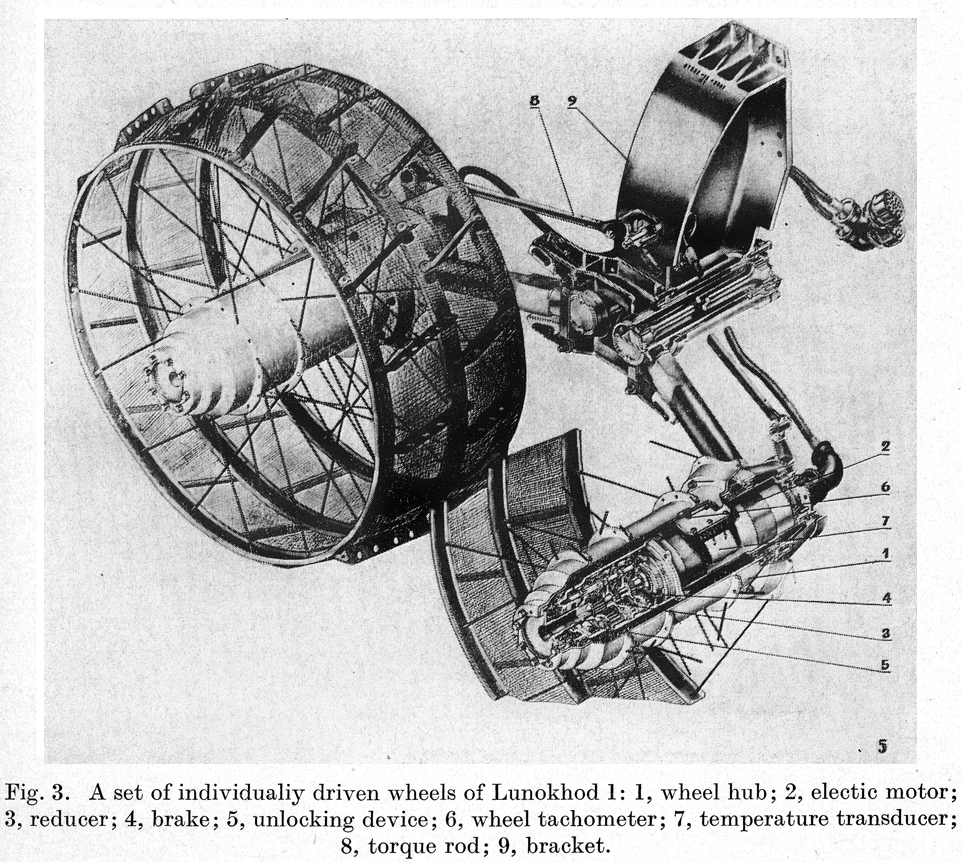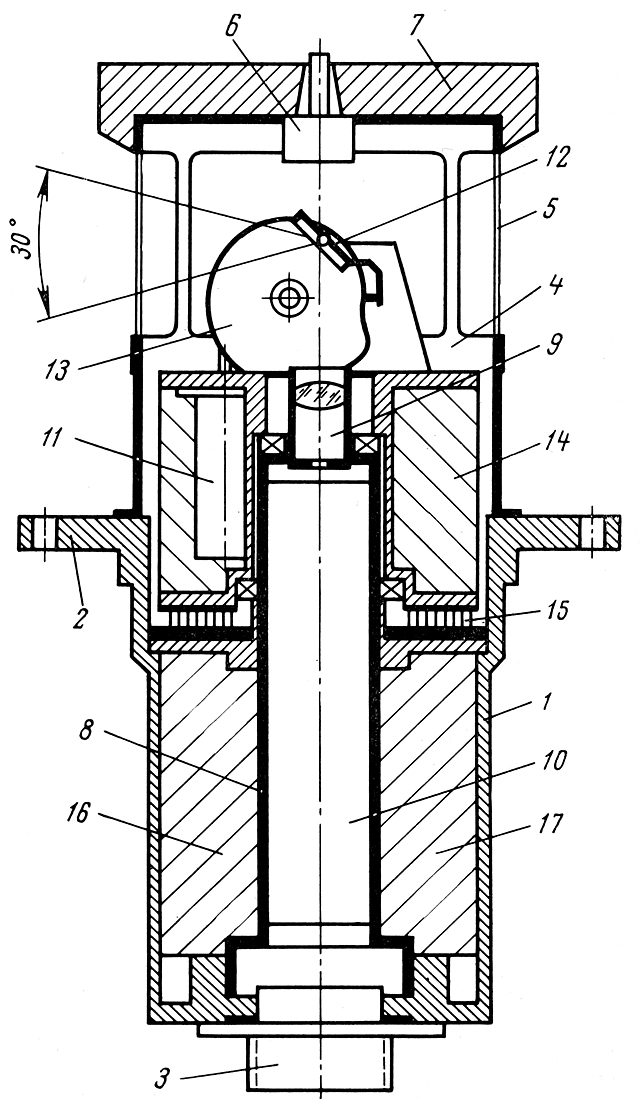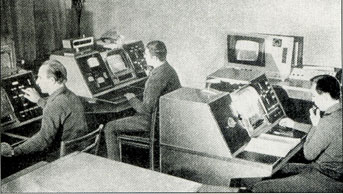Venera-13 and 14 landed on Venus in 1982 (March 1 and 5 respectively). The lander was contained in the spherical heat shield seen at the top of the spacecraft. The full spacecraft was over 4 tons, launched by the Soviet Union's large Proton rocket. 



The lander housed a number of scientific experiments in a spherical titanium pressure vessel, surrounded by silica insulation. Temperature inside was also controlled by a phase change material that absorbed heat as it melted. 

A drilling apparatus collected rock to be analyzed by X-ray fluorescence. The electric motor was designed to operate only after its parts had expanded at 460 C. 

The mechanical scanning camera slowly swept out a wide panoramic image, measuring brightness with a photo multiplier tube and digitizing it to 9 bits per pixel. Each probe had two cameras. 



This cameras swept back and forth, sometimes dropping red, green or blue glass filters to get color readings and sometimes with no filters. 

• • •
Missing some Tweet in this thread? You can try to
force a refresh











